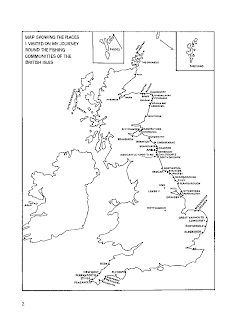In my other non-blogging life, I am an editor. I recently upgraded all of my hardware and, when surveying my desk, realised my reference library was a bit bare. So, with the blessings of my accountant, I went a little bit grammar-book wild. Let's just say ... I bought a lot of books! The first of these to arrive (along with a very useful Text Classic tote bag) is
Between You & Me: Confessions of a Comma Queen by Mary Norris.
Mary Norris is a copy editor at
The New Yorker. As an Australian,
The New Yorker has not really been on my radar. I knew F Scott Fitzgerald (my literary boyfriend) published short stories in it and that it was well known enough to be riffed on in an episode of
Seinfeld, but other than that, it was just another literary mag to me. Well, I now know that it is not just another literary mag but an esteemed American cultural institution, known in part for its excellent editorial quality, of which copy editors are a vital part.
Between You & Me is a collection of essays about Norris' time at
The New Yorker, moving between moments in her personal history, events at the magazine and reflections on grammar. In some places, this is done very well. For example, in "The Problem of Heesh", Norris reflects on the lack of a generally accepted gender-neutral pronoun. Of the option suggested by EB White, "heesh," she writes: "Heesh has the lovely property of looking as if it had been formed when "she" backed into "he" and spun around." I agree! (But I am also a proponent of using "their" as a third person pronoun, so not in agreement with Norris there). The abstract discussion of gender and pronoun becomes personal when Norris' brother reveals he is trangender and it is the changing of pronouns that trips Norris up the most. It's an excellent chapter.
I learned a lot in this book. For example, in the study and teaching of language, orescriptives are those who tell you what to do, and descriptives are those who describe what people say without judging it (I think I sit somewhere in the middle of those two - I understand that language is a dynamic ever-changing tool of communication but I also think it's very important that the distinction between less and fewer is maintained). I also found out that "emend" means to correct errors in something written. It was Noah Webster, of
Webster's Dictionary fame, who is responsible for the differences between American and English spellings. He hated unnecessary letters (as Norris says, wanted to make the othography match the pronunciation) so took out the "u", switched the "re" with 'er" and tried to drop the "e" at the end of words like "axe" and"medicine" (thank God that didn't catch on!). As someone who works with clients from around the world, I now know who to blame for all of the unnecessary hassle I go through figuring out where an item will be published hence which style to use. Noah Webster was instantly moved to my No.1 most hated list, and for that alone it was worth reading this book.
Between You & Me is charming. It contains actual interesting discussions of grammar, which is a remarkable feat of its own. There is a chapter on pencils which is #onlyforthefans but, as a knitting enthusiast, I love hearing about other people's particular fascinations. Be warned, though, like the institution in which Mary is based, this book is very pleased with itself. There's a bit of humblebragging (like the time Mary picked up an error in a Philip Roth book and he wrote a note to her saying "Who is this woman? And will she come live with me?" (FN1)) and name-dropping, but then since if I knew and had worked with famous people I would be dropping it in conversation all the time, so that is forgivable. Mary pokes gentle fun at the stuffy ways of the magazine while at the same time being very convinced of the rightness of the way they do things there. This is completely understandable but at the same time somewhat amusing to read. It is a small flaw, though, and easily forgiven.
I enjoyed this book a lot. I learned many things while reading it and finished it with a smile on my face. 4.5 stars.
(I probably shouldn't say this but if you are interested in this book, I point you to
Alice Mattison's excellent review at the LA Review of Books)
FN1: Based on Mary's compliments of Noth's prose, I borrowed
I Married a Communist, after having previously tried but failed to finish
Portnoy's Complaint. Again, I got 20 pages in and gave up. I don't understand the appeal of his books! But at least I tried).


